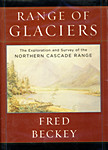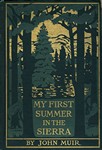| Previous :: Next Topic |
| Author |
Message |
InFlight
coated in DEET


Joined: 20 May 2015
Posts: 847 | TRs | Pics
Location: Seattle area |
 |
InFlight
coated in DEET
|
 Sun Mar 21, 2021 10:06 am |
|
|
I spent weeks removing way too much ivy roots and all that had been planted along the front of the house.
I would like to replace it with PNW native ground covers, preferably under 6 inches. I have a two beds and about 40+ feet about 5 feet deep. Somewhat shady with a lot of rhododendrons. Thus I could easily mix in five or so species.
So far I have planted Bearberry (Cotoneaster dammeri) in one location.
Some others I been considering are
Bunchbearry (Cornus canadensis)
Redwood Sorrel (Oxalis Oregon)
Any other suggestions?
Any good nurseries for these in the south end of Seattle?
“I went to the woods because I wished to live deliberately...” ― Henry David Thoreau
“I went to the woods because I wished to live deliberately...” ― Henry David Thoreau
|
| Back to top |
  
|
 |
mike
Member


Joined: 09 Jul 2004
Posts: 6396 | TRs | Pics
Location: SJIsl |
 |
mike
Member
|
 Sun Mar 21, 2021 11:27 am |
|
|
FYI Oxalis is very invasive and will take over.
|
| Back to top |
  
|
 |
neek
Member


Joined: 12 Sep 2011
Posts: 2335 | TRs | Pics
Location: Seattle, WA |
 |
neek
Member
|
 Sun Mar 21, 2021 11:56 am |
|
|
|
| Back to top |
  
|
 |
Brian Curtis
Trail Blazer/HiLaker


Joined: 16 Dec 2001
Posts: 1696 | TRs | Pics
Location: Silverdale, WA |
Various conservation districts around the state have native plant sales. Unfortunately, you just missed King County's. You might try looking around at nearby counties to see if any are having an upcoming sale. The various native plant societies have occasional sales that are worth checking out, but I don't know what they are doing during the pandemic.
that elitist from silverdale wanted to tell me that all carnes are bad--Studebaker Hoch
that elitist from silverdale wanted to tell me that all carnes are bad--Studebaker Hoch
|
| Back to top |
  
|
 |
zephyr
aka friendly hiker


Joined: 21 Jun 2009
Posts: 3370 | TRs | Pics
Location: West Seattle |
 |
zephyr
aka friendly hiker
|
 Sun Mar 21, 2021 1:26 pm |
|
|
| InFlight wrote: | | So far I have planted Bearberry (Cotoneaster dammeri) in one location. |
Yes, we have a native bearberry in the Northwest. I have some in my garden. However, the native genus is Arctostaphylos and Arctostaphylos Uva ursi is our local version. They are closely related to the Manzanitas. They hug the ground and form a carpet in time.
The Cotoneasters are an Asiatic genus. From the Wiki page: Cotoneaster dammeri, the bearberry cotoneaster, is a species of flowering plant in the genus Cotoneaster, belonging to the family Rosaceae, native to central and southern China (Gansu, Guizhou, Hubei, Sichuan, Tibet and Yunnan) and naturalized in Europe.
You also might consider planting some Salal (Gaultheria shallon) in places. It's more of an understory plant versus a ground cover, but it sure gives your garden a native feel to it. It's related to the Bearberry and the Manzanita.
Also a ground cover choice that grows readily in our climate is the native Strawberry. Here's an article on native Strawberry plants. The one that I have is the wild Beach Strawberry (Fragaria chiloensis) which grows along the Oregon and Washington coast. Once it's established, it will send out runners and seek new territory. So you may have to keep an eye on it. But it's a beautiful plant, easy to grow and control. ~z
Sourcing native plants can be challenging. I have two nurseries that I use mainly. One in Shoreline, and the other in Gig Harbor.
|
| Back to top |
  
|
 |
mike
Member


Joined: 09 Jul 2004
Posts: 6396 | TRs | Pics
Location: SJIsl |
 |
mike
Member
|
 Sun Mar 21, 2021 2:25 pm |
|
|
| zephyr wrote: | | Cotoneaster dammeri, |
Yes, non-native and an aggressive invasive.
I would recommend our native oregon grape Mahonia aquifolium and Kinnikinnik Arctostaphylos uva-ursi
|
| Back to top |
  
|
 |
olderthanIusedtobe
Member


Joined: 05 Sep 2011
Posts: 7708 | TRs | Pics
Location: Shoreline |
What about heather? I see that in plenty of yards. Flowers for about half of the year.
|
| Back to top |
  
|
 |
zephyr
aka friendly hiker


Joined: 21 Jun 2009
Posts: 3370 | TRs | Pics
Location: West Seattle |
 |
zephyr
aka friendly hiker
|
 Sun Mar 21, 2021 3:15 pm |
|
|
| olderthanIusedtobe wrote: | | What about heather? I see that in plenty of yards. |
Well, per the O.P.'s request, he's looking for PNW natives. See below.
| InFlight wrote: | | I would like to replace it with PNW native ground covers, preferably under 6 inches. |
Yes, you do see a LOT of heather in people's yards and gardens. Here's a note on that:
Calluna vulgaris, common heather, ling, or simply heather,[1] is the sole species in the genus Calluna in the flowering plant family Ericaceae. It is a low-growing evergreen shrub growing to 20 to 50 centimetres (7.9 to 19.7 in) tall, or rarely to 1 metre (39 in) and taller,[2] and is found widely in Europe and Asia Minor...It is native to Europe, Iceland, the Faroe Islands, and the Azores.[7] It has been introduced into many other places worldwide with suitable climates, including North America, Australia, New Zealand and the Falkland Islands.[8]
So in keeping with the native PNW theme we are looking at NW natives. ~z
|
| Back to top |
  
|
 |
olderthanIusedtobe
Member


Joined: 05 Sep 2011
Posts: 7708 | TRs | Pics
Location: Shoreline |
So that heather I see EVERYWHERE in alpine/subalpine areas is not native? Really?
|
| Back to top |
  
|
 |
Malachai Constant
Member


Joined: 13 Jan 2002
Posts: 16092 | TRs | Pics
Location: Back Again Like A Bad Penny |
The “heather” we see in alpine areas is apparently not a true heather it is difficult to grow at sea level. Calluna vullgaris scotch heather is what is sold in nursery’s. I am not a smarty pants I just looked it up.
"You do not laugh when you look at the mountains, or when you look at the sea." Lafcadio Hearn
"You do not laugh when you look at the mountains, or when you look at the sea." Lafcadio Hearn
|
| Back to top |
  
|
 |
zephyr
aka friendly hiker


Joined: 21 Jun 2009
Posts: 3370 | TRs | Pics
Location: West Seattle |
 |
zephyr
aka friendly hiker
|
 Sun Mar 21, 2021 3:42 pm |
|
|
| olderthanIusedtobe wrote: | | So that heather I see EVERYWHERE in alpine/subalpine areas is not native? Really? |
Good catch. We are hung up on the Common name. There's heath which you are referring to and there's heather. Here's how Dana K. Bressette, a local ornamental horticulturalist puts it:
The Heath Family–Family Ericaceae
Whereas conifers predominate in the canopy of our forests, members of the heath family dominate the understory of our forests, our wetlands, and alpine regions. This large family of plants lives in almost every part of the world. The petals of ericaceous flowers are fused at the base, usually forming a tube. They are usually pollinated by hummingbirds, bees and other insects. Most ericaceous plants are found in acidic, humusy soil and often depend upon fungal mycorrhiza for successful growth. Many genera are important in the field of horticulture.
~z
|
| Back to top |
  
|
 |
olderthanIusedtobe
Member


Joined: 05 Sep 2011
Posts: 7708 | TRs | Pics
Location: Shoreline |
Okay thanks. The wild variety looks quite similar to me to the decorative variety.
|
| Back to top |
  
|
 |
Pyrites
Member


Joined: 16 Sep 2014
Posts: 1884 | TRs | Pics
Location: South Sound |
 |
Pyrites
Member
|
 Sun Mar 21, 2021 8:27 pm |
|
|
Thanks. I was really perplexed by this. I even looked at an old photo of ptarmigan on slopes near Tapto Lakes, in what I’ve always called heather.
Keep Calm and Carry On?
Heck No.
Stay Excited and Get Outside!
Keep Calm and Carry On?
Heck No.
Stay Excited and Get Outside!
|
| Back to top |
  
|
 |
Anne Elk
BrontosaurusTheorist


Joined: 07 Sep 2018
Posts: 2419 | TRs | Pics
Location: Seattle |
 |
Anne Elk
BrontosaurusTheorist
|
 Sun Mar 21, 2021 9:04 pm |
|
|
Take a wander through these lists, look up photos if need be:
Sound Native Plants
Real Gardens Grow Natives
My particular faves include fringecup, foam flower and the native bleeding heart. The bleeding heart is taller than your preferred height limit, but the native variety is very delicate, and in summer the leaves die back and it goes dormant. The violets are nice too, but they're as vigorous as the oxalis.
"There are yahoos out there. It’s why we can’t have nice things." - Tom Mahood
"There are yahoos out there. It’s why we can’t have nice things." - Tom Mahood
|
| Back to top |
  
|
 |
zephyr
aka friendly hiker


Joined: 21 Jun 2009
Posts: 3370 | TRs | Pics
Location: West Seattle |
 |
zephyr
aka friendly hiker
|
 Mon Mar 22, 2021 9:27 am |
|
|
| Anne Elk wrote: | | Take a wander through these lists, look up photos if need be: |
Those are both excellent resources. ~z
|
| Back to top |
  
|
 |
|
|